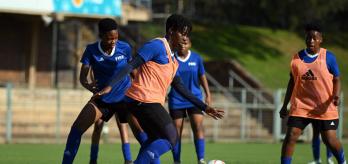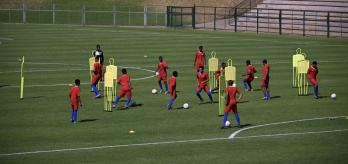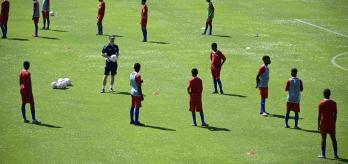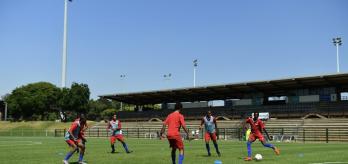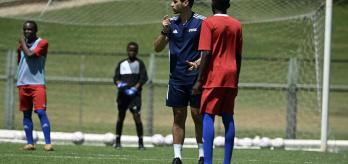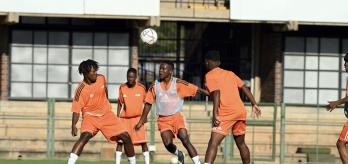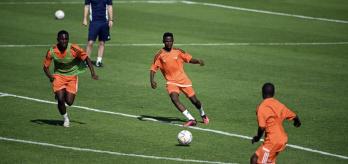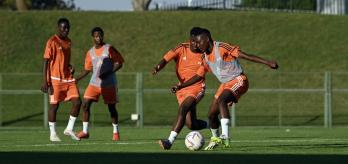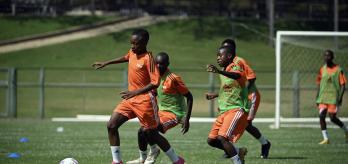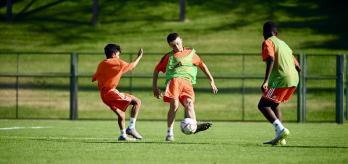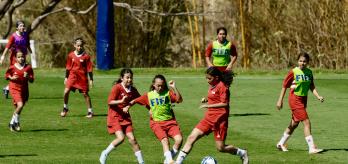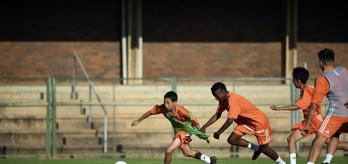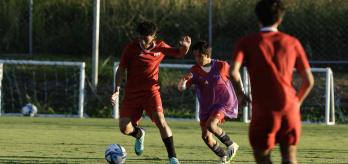Methodology
The intention: What is practised?
The aim of the exercise is to enhance a team’s ability to build and progress play. The drill emphasises team actions, including avoiding the press when playing out from the back and working together to open up spaces higher up the pitch for team-mates to receive the ball and create goalscoring opportunities. Players are tasked with constantly being aware of where space is developing, and they can create space by moving towards the ball carrier to drag defenders away and allow a third player to move into the vacated space. In-possession team players should position themselves between opponents to cause uncertainty for the opposition and allow clear forward passing sequences to be created. Unit skills, such as coordinated movement between midfielders and support play, are also focus areas in the exercise.
The scale: For whom is this relevant?
The exercise revolves around the team scale and focuses on identifying and exploiting open spaces to progress the ball. The drill is particularly relevant to players who operate in central areas in the build-up phase when trying to play forward and through the press. The first line of the build-up consists of players who operate outside the opposition’s shape, such as the goalkeeper and either two or three centre-backs. Three midfielders operate in the second line and must coordinate their movements to receive the ball or offer support in narrow central spaces. For example, if one midfielder (6) drops to receive, a second midfielder should act as the number (8) and move into a space to receive where the line can be broken, while the third midfielder advances. The remaining four players operate as attacking players, typically the number (7), (9), (10) and (11), and should spread out across the exercise area to offer alternative attacking options or forward passes.
The practice type: How is the practice designed?
The exercise involves an opposed team game, featuring a range of opportunities for a team to practise overcoming multiple problems when under pressure and focuses on building play, receiving and playing through central areas and creating goalscoring chances in the final third. Variations are presented to highlight different options and obstacles when dealing with pressure across all areas of the pitch. The reduced-sized exercise area creates a certain density of players and ensures that there is always pressure on the ball, which adds a constraint, as it forces players to identify where open spaces are generated inside the opposition’s shape. Although the players are not assigned specific roles, they are tasked with organising themselves into a structure, with players finding themselves in certain positions and asked to perform the corresponding role.
Session plan
Organisation
-
Set up a 40x20m exercise area and mark out the halfway line.
-
Place a full-size goal at each end of the exercise area.
-
Position a goalkeeper in each goal.
-
Split the group into 2 teams of 8 (oranges v. blues).
Explanation
-
The ball starts with the goalkeeper of the orange team and they must progress the ball nd try to score.
-
The blues try to win the ball back. If they manage to do so, they try to score into the opposite goal.
-
The team to score the most goals win.
Key coaching points
Roles of coaches
-
First coach: leads the exercise and stops play at intervals to ask the players to think about their movement.
-
Second coach: offers support from their position on one side of the exercise area.
-
Third coach: offers support from their position on the opposite side of the exercise area to the second coach.



























